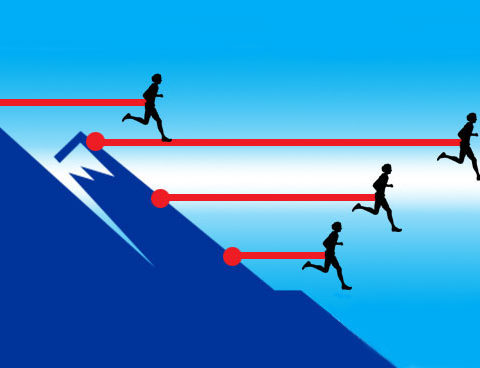
Altitude training is a part of almost all elite training programmes for runners. More than 95% of the medalists at the World Championships and the Olympic Games have lived or trained at altitude.
This simulated altitude takes place over a period of weeks or months. Studies say it takes 21 to 28 days for the body to adapt.
The benefits of exposure have little to do with training and more to do with the body's response to lack of oxygen. The first rule of altitude training is: no heavy training or hard efforts in the first three to seven days, train easily and know that the benefits are in the body.
Hydration is an important factor when it comes to increasing plasma volume.
Important points runners should know about altitude training
Altitude training is a complex subject that has attracted attention in the modern running era. Most athletes are aware of the basic principles of altitude training that it should improve your performance. There is a difference of 4.4% between an athlete running at sea level and the same athlete running at altitude. An athlete is 4.4% slower when competing at an altitude of only 700 metres. The reason for this reduced performance is a lack of oxygen, also known as hypoxia. We know that when we rise to altitude, the concentration of oxygen in the air decreases. When an athlete is exposed to hypoxia by training at altitude, several physiological changes occur.
- A greater concentration of oxidative enzymes in the mitochondria of the skeleton to generate more energy (ATP).
- Fat consumption is increased, which reduces acidosis.
- Stimulation of the production of erythropoietin hormone, which in turn increases the production of red blood cells.
- Immediately upon arrival at altitude, the kidneys react by sending erythropoietin (EPO) to the bone marrow, which produces new red blood cells to carry more oxygen.
Optimal period of altitude training for runners
A recommendation is 4 weeks at altitude. 4 weeks is sufficient to increase the concentration of red blood cells. The optimal time for returning to lower altitudes and racing is about 2 - 3 weeks. This time helps to return to normal breathing and blood acidity. It allows recovery from the fatigue of heavy training at altitude. This time provides ample opportunity for middle-distance runners to run faster and improve their race.
Randy Eichner, M.D., suggests the following tips for dealing with high altitude:
- Take it easy on the first day.
- Take a walk or a nap. Give your body time to adjust before starting a full workout.
- Altitude is very dehydrating. Drink plenty of water and juices, starting when travelling to high altitudes.
- Avoid alcohol. It is a diuretic and suppresses the normal breathing response at altitude.
- Limit caffeine. It is also a diuretic.
- Eat pasta. Carbohydrates are good for athletes in general and at altitude there is another benefit: the extra CO2 they produce stimulates the respiratory response.
- Avoid sleeping pills, but do get a good night's sleep.
